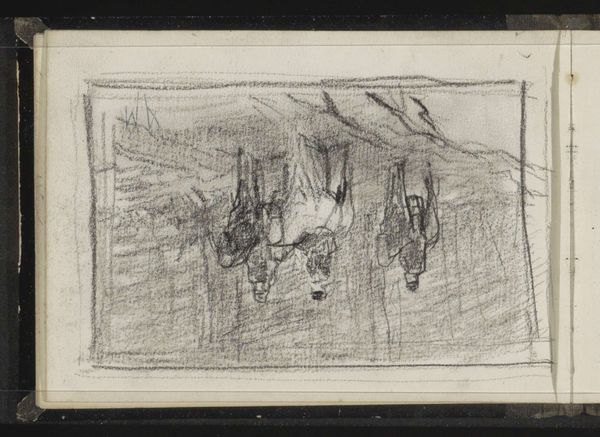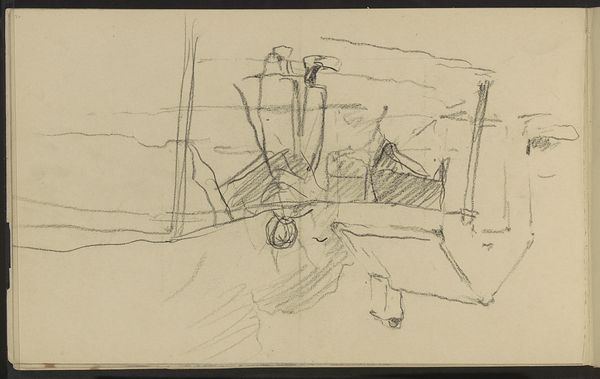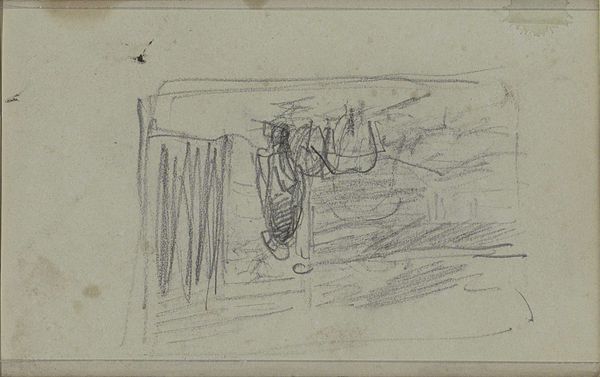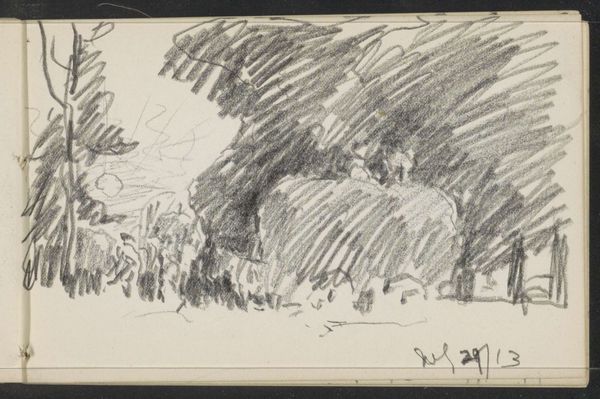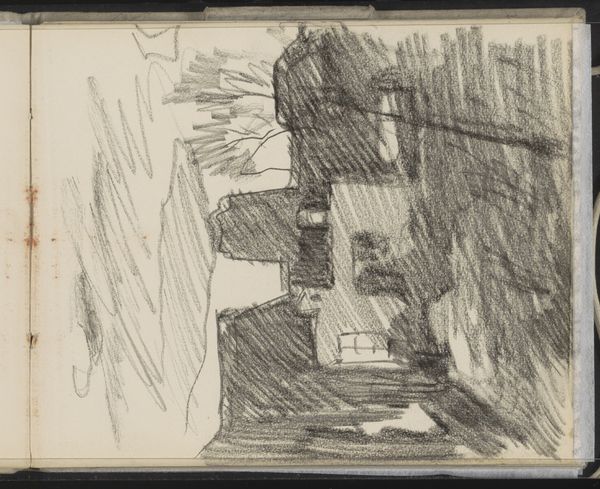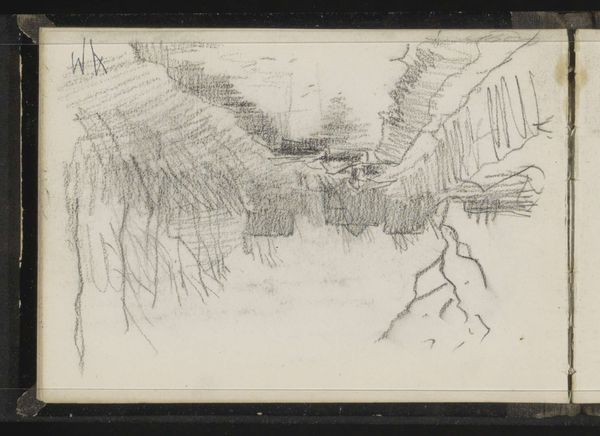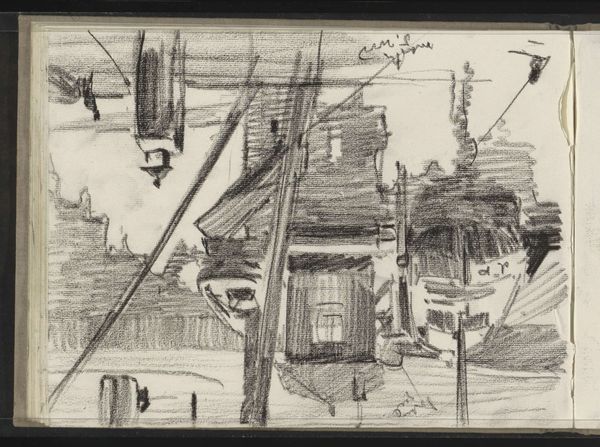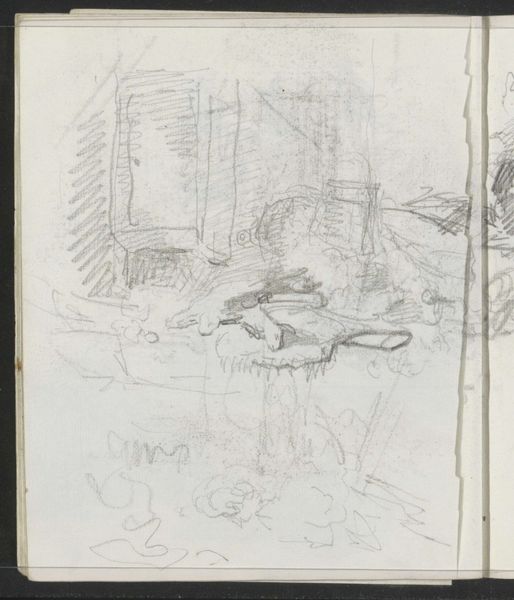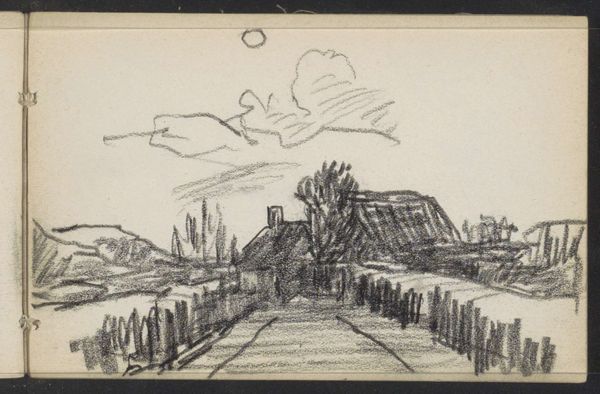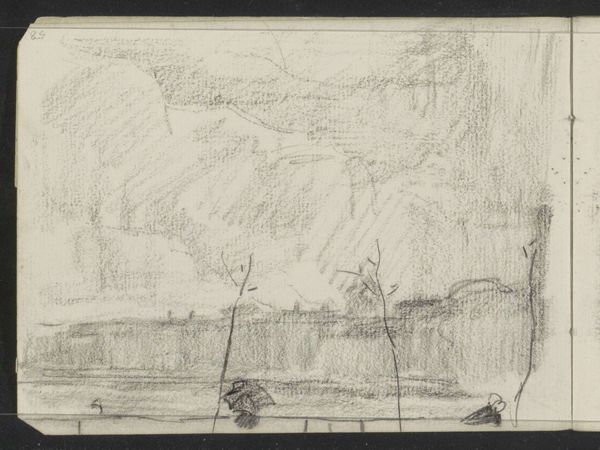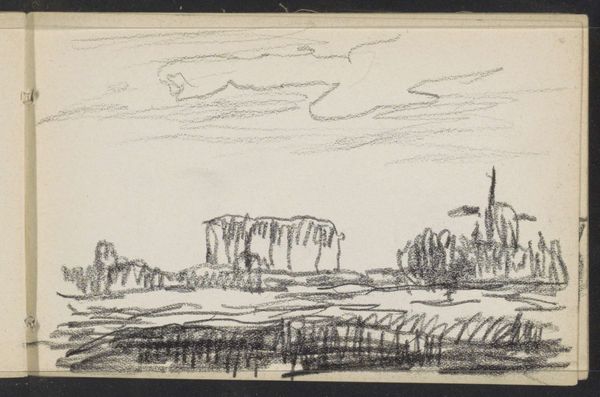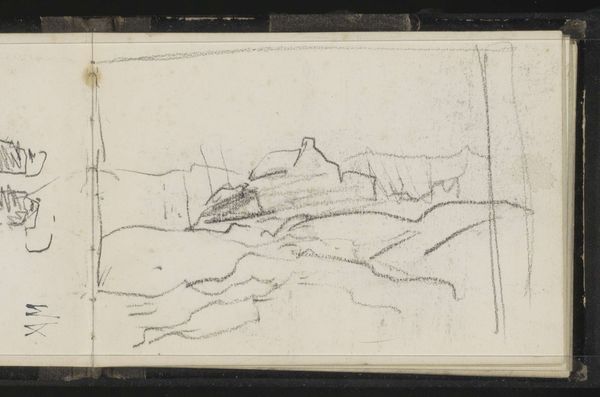
drawing, graphite
#
drawing
#
impressionism
#
pen sketch
#
landscape
#
graphite
#
genre-painting
#
realism
Copyright: Rijks Museum: Open Domain
Editor: So, here we have "Figure Milking a Cow in a Meadow," a graphite and pen sketch by Anton Mauve, created sometime between 1848 and 1888. The drawing has this incredibly immediate quality. What do you see in it, considering his process? Curator: For me, this piece is a potent reminder of artistic labor and its relationship to the land. Think about Mauve's physical act of sketching—the materials he chose, the pressure he applied. This wasn't just about representation, but about engaging with a specific subject matter. What does the seeming roughness of the sketch suggest about the value placed on rural labor in this period? Editor: That's a great point. The roughness, the quick lines, make it seem like a fleeting moment captured, maybe even a commentary on the everyday life of working people. Does the choice of such simple materials elevate or, perhaps, even democratize the artistic process? Curator: Exactly! Consider graphite and pen—common, accessible materials. By utilizing these, Mauve possibly breaks down traditional notions of high art. He brings artistic practice closer to the realities and materials of the world he's depicting. Think of the physical act of milking—Mauve mirrors this process of extraction with his pen extracting the essence of the scene. What socio-economic implications can we draw from the subject? Editor: It highlights a crucial tension – the romanticism of rural life versus its often-harsh realities. It's got me thinking about how Impressionism’s focus on capturing fleeting moments might obscure a deeper engagement with social conditions. Curator: Precisely! The materiality pushes us beyond mere aesthetics to confront the realities of labour, production and the inherent value, or lack thereof, assigned to these activities by broader societal structures. It’s a piece that invites us to critically examine both the artistic process and its social context. Editor: That gives me a completely different perspective on this sketch. It's not just a pretty landscape; it's a commentary on work and materials. Curator: Agreed. By engaging with the tangible aspects of art production and the visible representation, we can challenge traditional boundaries of how to look at art and consider the bigger picture.
Comments
No comments
Be the first to comment and join the conversation on the ultimate creative platform.
